Best Serengeti National Park Tours
Serengeti is the most ancient and immensely famous park,
Serengeti is hugely known for its annual migration.
You can witness around six million hooves keep on hitting the open plains.
There are also sights such as 300,000 Thomson’s gazelle
200,000 zebra coming together along with the wildebeests trek to feed on grassland.
It is really hard to confine the attractions of Serengeti to migration alone.
Enjoy sparkling game-viewing experience in Africa,
Best Serengeti National Park Tours is the place to go.
There are numerous Grants gazelle, impala, kongoni, topi, elands, giraffes, small groups of elephants, large herds of buffalo and many more.
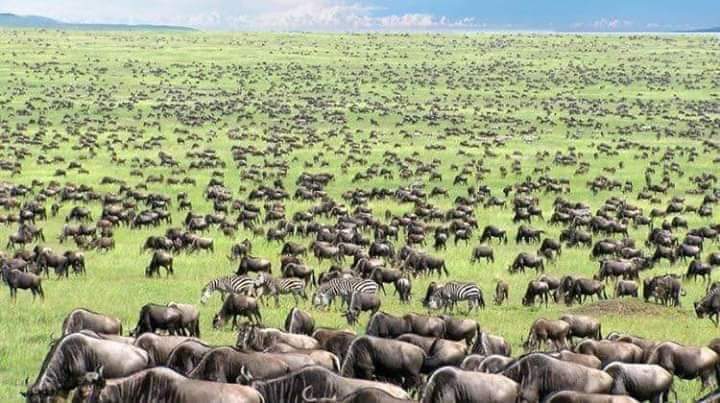
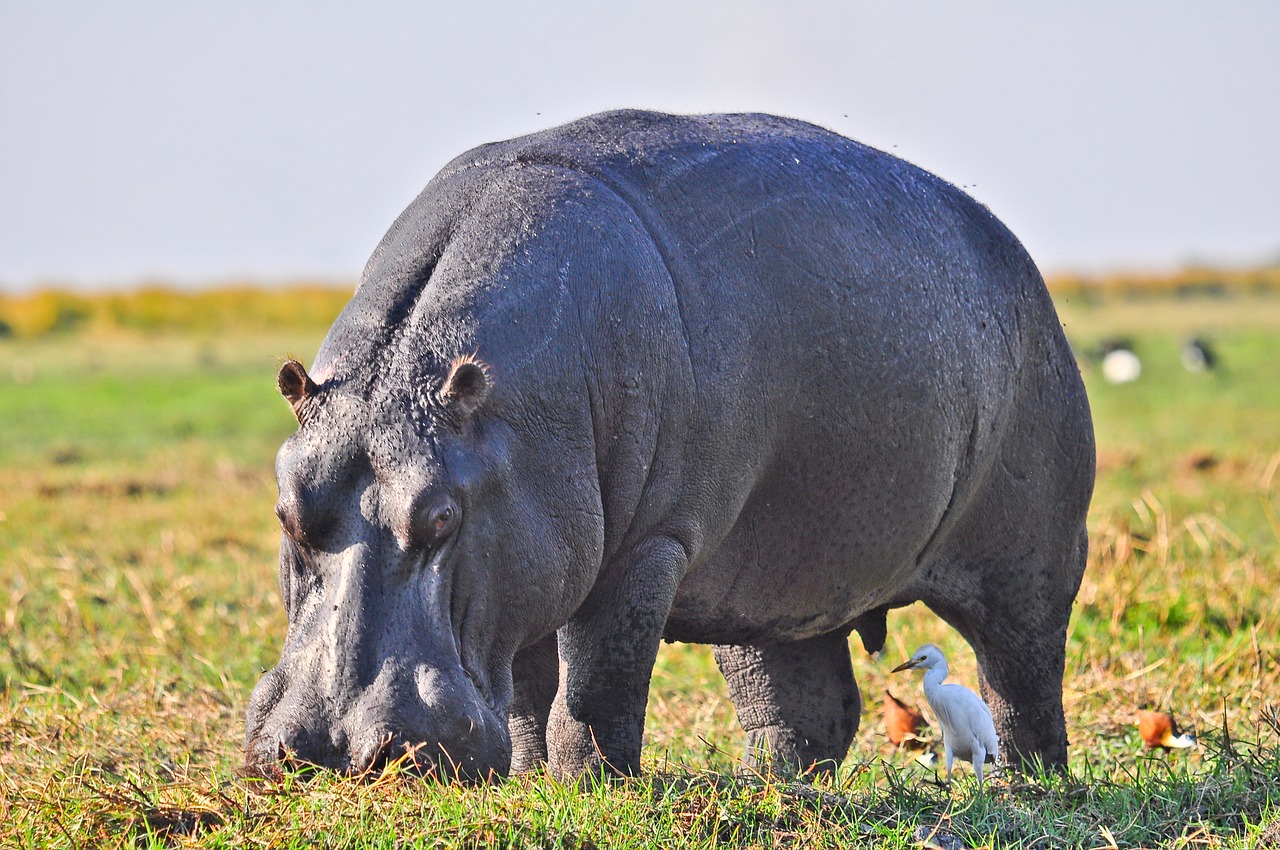
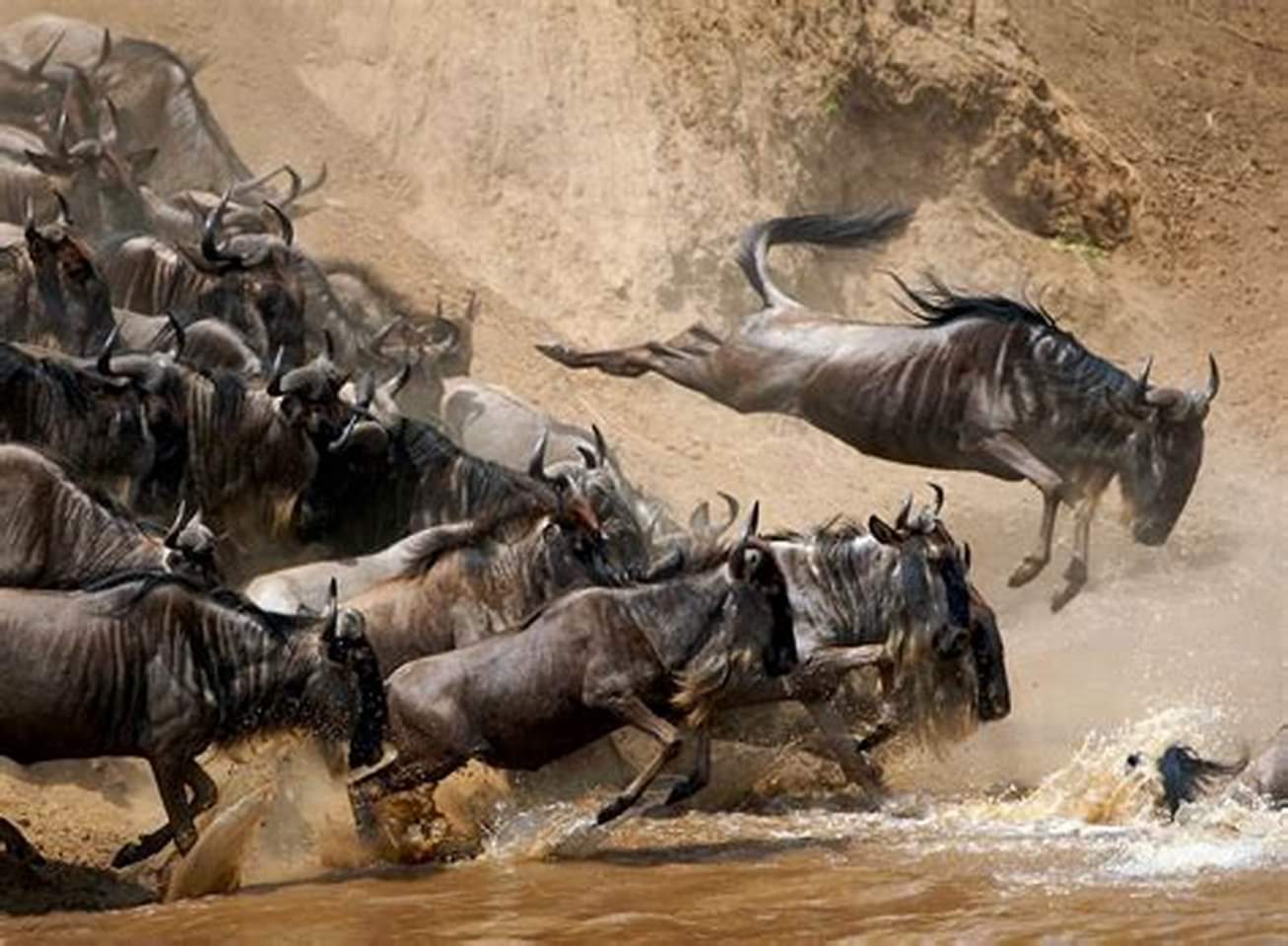
There is no ‘right time’ to experience the Great Migration, whether it is in the serene southern grasslands or in the north with its treacherous river crossings. The Annual Migration is at is peak with crossings of the Mara, Grumeti and other rivers in June and July, while wildebeest calving season in the south from January to March offers excellent viewing and predator action. The wet season from November to May, when migratory birds are present in the region, is popular with birding enthusiasts.
January to March: Calving in the South
Camps positioned for migration at this time: Kimondo South, Olakira South, Ubuntu South, Namiri Plains, Dunia
- January: Calving season begins in the Ngorongoro area of the southern Serengeti of Tanzania
- February: Wildebeest grazing and calving in southeastern region
- March: Calving season ends and rutting season begins
April to May: Grouping in the Central Region and the Seronera Valley
Camps positioned for migration at this time: Dunia and Namiri Plains
- April: The wildebeest start moving north and grouping in the central areas of the Serengeti.
- May: As the rains end, the animals start moving northwest into areas around Grumeti River, where they remain until late June.
June to July: The March North and into the Western Corridor
Camps positioned for migration at this time: Ubuntu West, Ubuntu North, Olakira North, Kimondo North, Sayari, Dunia, Namiri Plains, Mara Bush Houses, Rekero, Naboisho, Encounter Mara
- June: Dry season starts. Animals in Grumeti River region.
- July: Main migration of wildebeest, zebra and eland heading north across the Mara River, arriving Kenyan border and then into Maasai Mara late July/August.
August to October: Crossing the Mara River
Camps positioned for migration at this time: Ubuntu North, Olakira North, Kimondo North, Sayari, Mara Bush Houses, Rekero, Naboisho, Encounter Mara
- August: as the dry season approaches, the wildebeest face the second challenge of their trek: the Great Mara River. Many will perish in the stampede but the thousands of calves that are born more than make up the numbers.
- September: the herds are mostly concentrated in the Maasai Mara in Kenya, the northernmost range of the trek, but many still remain in the Serengeti in Tanzania.
- October: the Wildebeest face the swollen waters of the Mara River once more as they cross on their journey back to the south.
November to December: Moving South to Begin Calving
Camps positioned for migration at this time: Olakira, Kimondo and Ubuntu (all in North locations before these three camps move South), Sayari, Namiri Plains, Dunia, Mara Bush Houses, Rekero, Naboisho, Encounter Mara
- November: the short rains propel the wildebeest further South to the rejuvenated grasses of the Serengeti.
- December: the wildebeest make their way back ‘home’ towards the Southern grasslands of the Serengeti, ready to begin calving and continue their trek all over again
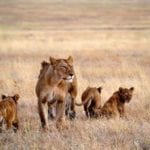
Activities
While heart-stopping wildlife encounters and extraordinary sightings in the Serengeti are guaranteed, there are many ways to experience and learn more about this very special wilderness.
Most of our camp guides and managers are drawn from local communities. They are always eager to give interested guests deeply personal insight into the rich culture that defines these corners of East Africa. Visits to nearby communities and homesteads are easily and enthusiastically arranged.When nomadic Ubuntu, Kimondo and Olakira are camped in the north (July to October) you can visit the nearby local villages for a glimpse into the traditional way of life and culture of the Kuria people. Spend a morning or afternoon visiting a traditional homestead, school or the marketplace (where you can shop for crafts and handmade souvenirs) or be entertained by local Kuria dancers.At Sayari you can also stop off at the community vegetable gardens – mentored and sponsored by Asilia – to gather organic fresh produce for your evening meal.
Available at these Serengeti camps: Ubuntu North, Olakira North, Kimondo North & Sayari
I am text block. Click edit button to change this text. Lorem ipsum dolor sit amet, consectetur adipiscing elit. Ut elit tellus, luctus nec ullamcorper mattis, pulvinar dapibus leo.
Wildlife
The Serengeti is home to a simply remarkable number of species. Of course, the main attraction is the Great Migration, when over a million wildebeest and hundreds of thousands of zebra and gazelle traverse the plains along age-old migration routes in search of fresh grass.
But the Serengeti is also one of the few places in Africa where game viewing is spectacular year round, and it is classic Big Five territory. Vast herds of grazers are ever present and predator numbers are high, with almost 3 500 lion in the area and frequent sightings of leopard and cheetah.
Our top sightings in the Serengeti include:
- The Big Five: elephant, buffalo, lion, leopard and rhinoceros (black rhino are rare)
- Cheetah
- Zebra
- Spotted hyena
- Hippo
- Aardwolf (very rare)
- Ground pangolin (very rare)
- Klipspringer
- Oribi
- Coke’s hartebeest
- Wild dog (mostly in the Southern plains)
- Golden jackal
- Topi
- Bat-eared fox
- Serval
Regions of the Serengeti
The Serengeti is a vast wilderness that spans over a million hectares – so where to start planning your safari? The best way to ensure you get the best, most fulfilling experience possible is to understand what the different regions have to offer.
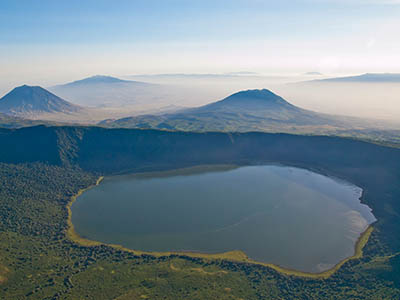
Empakai Ngorongoro Crater in the southern Serengtei.
First-time visitors to Serengeti should not miss the Southern region. This is where you’ll find Serengeti’s iconic grassland plains, the Ndutu Woodlands and spectacular Ngorongoro Crater, where you’ll find an incredible diversity of wildlife year-round.
As the summer sun warms the landscape, the wildebeest begin their trek back to the lush grasslands of the south and neighbouring Ngorongoro Conservation Area (but not Ngorongoro Crater itself). Vast plains of lush new grass triggered by the start of the summer rains provide perfect fodder for the wildebeest, which come here to graze, rest and calve en masse. In February, the plains are filled with millions of wildebeest calves as mothers give birth to approximately 500 000 babies in a remarkably synchronised event. Of course, where there are wildebeest there are predators. In the southern grasslands, lion, leopard and cheetah are never far from the action, while Lake Ndutu in particular has high concentrations of the elusive African wild dog. The granite kopjes in this region make for great observation points for the big cats.
In the west, the Serengeti narrows into the remote ‘Western Corridor’, a small strip of verdant land that stretches almost to Lake Victoria. Two rivers flow through the area, the Grumeti and the Mbalageti, lined by evergreen forest and swampy savannah with its black clay soil.
From May to July, the Great Migration passes through and the herds of wildebeest pause to gather momentum before tackling the crossing of the Grumeti River, eagerly watched by predators at every turn. You’ll see enormous Nile crocodiles snapping opportunistically at their heels as they mill around the banks before stampeding across the fast-flowing waters. The landscape is as varied as the game: vast open plains, woodlands and savannas dotted with acacia trees provide a hospitable habitat for the wildlife species that can be sighted here.
This uncrowded area is virtually unexplored and teems with wildlife, including the largest concentration of elephants in the Serengeti. The landscape, which includes heavily wooded areas and bushy savannah, is spectacular, and offers an authentic off-the-beaten-track experience with viewings of hippo, giraffe, eland, Thomson’s gazelle and more.From August to November, the plains of the Northern Serengeti spring to life as millions of wildebeest travel age-old migration routes in search of new grass. It is here that the wildebeest face one of the principal obstacles of their trek, the great Mara River, providing spectacular, chaotic and exciting viewing. Wildebeest not only risk being swept away by the swollen river but must also run the gauntlet of Nile crocodiles submerged in the water and hungry predators on the other side.After the migration, once the wildebeest make their way south, calm descends on the northern plains. The grass rebounds into a lush green carpet, the Mara River returns to a sinuous ribbon of calm and resident game is plentiful. This is a special time to soak up the singular beauty of the Serengeti in peace and quiet.
Attractions
- The magnificent migrating herds
- Sprawling Serengeti plains
- Hippo Pools along the Grumeti river
- Game Drives in the vast park
- Hot-air Balloon Safaris